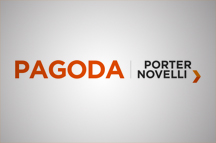 Scottish and UK taxation regimes are beginning to diverge.
Scottish and UK taxation regimes are beginning to diverge.
Scottish higher earners are facing increased levels of Income Tax, Land and Buildings Transaction Tax and Council Tax payments.
Derek Mackay, Cabinet Secretary for Finance, has turned to the Greens for support to steer his budget through Holyrood and the resulting changes demonstrate the divergence. The higher 40% income tax rate will now be set at £43,387 (the original SNP budget was £43,430). As the UK starting level is £45k, this means that the 360,000 Scots who pay the higher rate will be contributing £400 per annum more than those who pay the higher rate elsewhere in the UK.
With the Scottish government announcing that the policy will remain in place until 2020/21, higher rate taxpayers will by then be paying around £700 more (£60 per week) than the rest of the UK.
However, high earners are not just being hit by income tax increases; the Land and Buildings Transaction Tax (Scotland’s replacement for Stamp Duty) is significantly more progressive than its predecessor.
 While the Stamp Duty 10% rate kicks in at £935k, the 10% LBTT rate starts at £325k. So a house sold for £700k in Scotland will attract LBTT of £43,350k, while the equivalent sale in say England will result in £25k of Stamp Duty. For properties around £1m purchasers in Scotland would pay £78,350k compared to £43,750 elsewhere in the UK.
While the Stamp Duty 10% rate kicks in at £935k, the 10% LBTT rate starts at £325k. So a house sold for £700k in Scotland will attract LBTT of £43,350k, while the equivalent sale in say England will result in £25k of Stamp Duty. For properties around £1m purchasers in Scotland would pay £78,350k compared to £43,750 elsewhere in the UK.
And from April 1st 2017, higher earners will also make a greater contribution to local authorities through their council tax payments as the proportion paid by those living in properties valued in bands E to H has also increased. For 2017/18 a Band E property will attract £105 more council tax each year rising to £519 for Band H. Council tax payers will also have to pay locally levied increases in council tax of up to 3% for the forthcoming financial year.
As we know, the Scottish economy is not performing as well as the economy in the rest of the UK. In order to grow the economy the country needs to attract as many new businesses and higher rate taxpayers as possible. While the changes in the various tax regimes north of the border have not created a huge gap between respective higher earners, if the trend were to continue the divergence might result in businesses and people relocating outwith Scotland.
And given that the devolution of greater taxation powers to Holyrood means that the Scottish budget is increasingly dependent on a healthy economy generating an increased tax take, further divergence might result in an economic slowdown.














